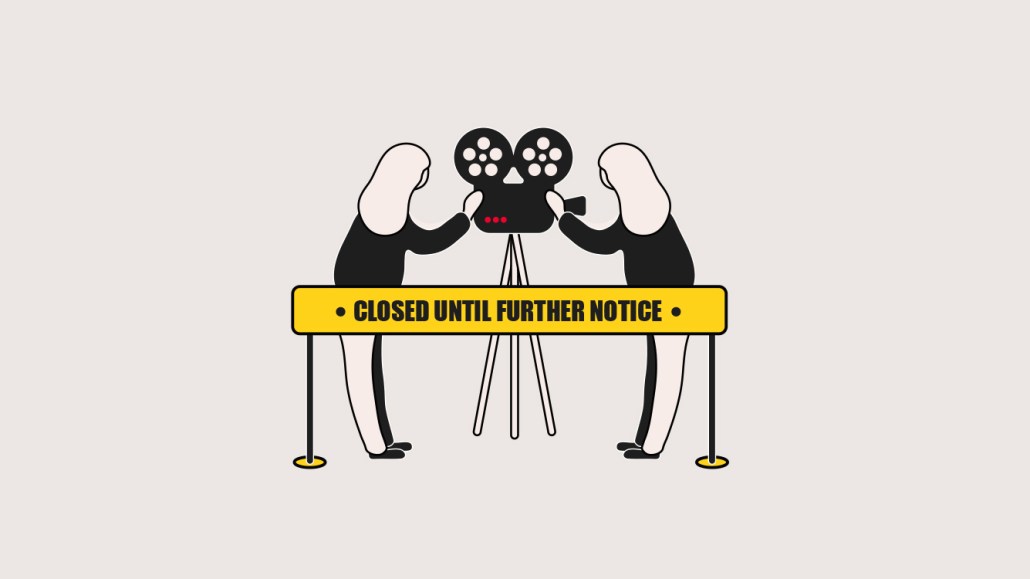‘Covid-proof production’: TV networks, streamers seek out show formats that can adapt to another shooting shutdown

As Hollywood eases back into production while coronavirus cases rise, TV networks’ and streaming services’ interest in so-called “corona-proof” programming has taken on a new twist.
After physical production shut down in March, TV networks and streamers sought out shows that could be produced remotely, such as animated fare and documentary series that rely on archival footage and interviews shot over Zoom. But, with shelter-at-home restrictions loosened so that shows can be shot in studios and on location, networks’ and streamers’ interest in programs produced exclusively remotely “has absolutely cooled off,” said one producer. Now, networks and streamers are in search of their regularly scheduled programming — to a point.
“As cases have climbed back up, they want normal shows but for us to pitch with Covid plans,” said a second producer of recent development talks with TV networks and streaming services.
That is to say, networks and streamers want shows that are in the vein of what they usually distribute but whose productions would be minimally disrupted in the event of another production shutdown. “If you can prove you can make a show right now, they want you to,” said the first producer. That desire includes scripted series but is especially suited to unscripted shows because the latter is more adaptable to the production uncertainty, according to producers.
For a scripted series, the majority of the time and money is spent during the pre-production and production, or shooting, phases. The longer a show is in production, the higher the risk that its production may need to be shut down if local authorities reinstitute lockdown restrictions to stem the rise in coronavirus cases. By contrast, for unscripted series at least half of the time and money spent on post-production, such as editing the footage shot during the production. As a result, an unscripted series would be more likely to be able to finish shooting before another production shutdown and then go into post-production remotely to complete the project.
Another reason that networks and streamers are scouring the market for unscripted shows is that these programs cost less to produce than a scripted series, with budgets usually in the low- to mid-six figures per unscripted episode compared to millions of dollars for scripted episodes. TV networks and ad-supported streamers, in particular, are having to manage their programming costs amid a weakened advertising market, so they are looking for less expensive programming. “That is going to create higher demand for unscripted projects, and we’re seeing that,” said a third producer.
However, TV networks and streamers are also looking to ensure that, if physical production is forced to stop and a project is not fully shot, the shoot can continue remotely. That way the networks and streamers can avoid the shutdown costs they had to cover when productions came to a halt in March. It also helps to protect their programming pipelines from drying up in light of the hiatus. “For any new project, you need to be able to say, ‘Here’s the covid-proof production plan,” said the second producer.
Producers’ covid-proof production plans largely borrow from the adjustments they have already made to produce programs remotely, such as hiring local crews that are tested regularly and follow mask wearing and social distancing safety guidelines in order to set up shoots inside the homes of on-camera talent. But the plans also include setting up a show to be shot outside, taking a page from restaurants’ and gyms’ reopening playbooks.
“If we start [production on a show], we’ve got to be able to finish with the assumption that Covid is back fully. If cases explode again and we go back into full lockdown, we need to be able to still do it,” said the second producer.
More in Future of TV

‘A year of loose ends’: Digiday editors share top takeaways from 2025
This year was filled with major developments – from Netflix’s planned WBD deal to Omnicom’s acquisition of IPG to Google’s ultimately cookie reversal – and Digiday editors Sara Jerde and Seb Joseph help to recap the year that was (and wasn’t).

Future of TV Briefing: How the future of TV shaped up in 2025
This week’s Future of TV Briefing looks back at the top topics and trends that overtook the TV, streaming and digital video industries in 2025.

Programmatic agency execs speak out on CTV transparency
At the recent Digiday Programmatic Marketing Summit, agency executives spoke out — on stage and in behind-closed-door town hall sessions — on how they see transparency in CTV.








